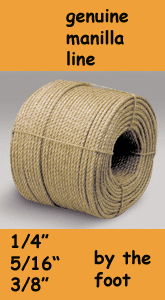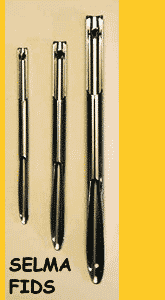
 Custom Search
|
| boat plans |
| canoe/kayak |
| electrical |
| epoxy/supplies |
| fasteners |
| gear |
| gift certificates |
| hardware |
| hatches/deckplates |
| media |
| paint/varnish |
| rope/line |
| rowing/sculling |
| sailmaking |
| sails |
| tools |
| join |
| home |
| indexes |
| classifieds |
| calendar |
| archives |
| about |
| links |
| Join Duckworks Get free newsletter CLICK HERE |
|
|
| Slingshot Review |
by Jeremy Eisler – Ocean Springs, Mississippi - USA |
So, I got tired of watching Frank Smoot's videos and wishing I had one of his Slingshot trimarans. After realizing I was spending more time on his website DIY-Tris than I was sailing my Compac 16, I asked him to enlarge his 16 foot design a little to accommodate two people and build one for me. You can see the result in the short video shot by my wife. The boat is fast, well mannered, weatherly, beautifully balanced and tacks with no issues. The experience of sailing facing forward while steering with your feet, sheet cleated and hands free while seated level in a cushioned seat with a backrest is ridiculously relaxing. I don't think I ever realized how uncomfortable twisting around on shallow cockpit seats while bracing yourself as the boat heels - or worse yet hiking out - really is, not to mention trying to open a can of beer with one hand. I knew I was always sore after sailing, now I know why. More importantly I now know how it feels not to be sore after sailing - wonderful! Frank's rudder design goes up and down with authority and works so well, even when only partially raised, that its easy to forget to put it all the way down. The mast step is sheer genius in its simplicity. Tip the mast into the slanted well, walk it up, flip a lid to lock it in place. No cirque de soleil balancing gymnastics to lower it in place, no hernia to remove it, no elaborate gin pole or winching arrangement to fool with, no shrouds to attach. I used to have an Aquacat largely because I wanted the ease of raising the di-pole mast. Believe me when I tell you Frank's arrangement is easier. The boom outhaul is another clever Smoot feature. It connects to a piece of PVC which slides on the boom, so you have the benefit of a track while reefing even though the boat has a loose footed sail. The sail itself reefs by rotating the unstayed mast. I don't know what kind of foil Frank has carved into the leeboard, but the boat points like a witch.
If the boat has a "flaw" its that it goes so fast with so little fuss that you just don't realize it unless you turn around to look at the wake. I didn't have a knotmeter or GPS but I'd be amazed it we didn't break 12 mph during the gusts and it was only blowing 8-10 mph. The boat handled the slight 1 to 1.5 foot chop with no issues and not a drop of spray. It did pound a bit going over some steep motor boat wakes and the main hull made a booming sound while doing so, but that was maybe 5 seconds out of a two hour sail. The amas didn't slap at all. Coming into the beach we got caught in the wind shadow of the buildings as it was an offshore breeze, so I had to break out the paddle for the last 100 feet. One paddle moved the boat with no issues and thanks to the foot operated rudder there was no need to change sides to keep the boat straight. What a delight. I have a fancy kayak with a rudder which works nowhere near as well, and that's after you whack it with your paddle to get it to drop. I was able to move the boat's various bits and pieces to the beach by myself. The amas are so light you can carry them simultaneously one in each hand thanks to the handle Frank put at the balance point. The main hull is a bit of a bear but manageable with a kayak dolly. Frank says it weights 105 pounds. Two strong people might get it on a roof rack. I'm not strong and I'm 62. I'd stick with a trailer. So, two amas, two akas, one mast, one boom, and main hull. Call it four trips total from the trailer (I put the boom in the main hull). Frank has some clever mechanisms for unfolding the amas and raising the mast so you can just launch one of his modified designs and go. However, where I sail there are lots of ramps, but very few which will let you get to sailing water without an engine. Plus, there's no way to board one of these boats from a pier, and the ramps around here are usually steep and slippery. The beach which is plentiful with easy access to sailing water is blocked off which prevents trailer access but there's plenty of room between the poles to wheel the 24 inch wide main hull. So, I opted for the ability to assemble the boat on the beach which worked great. It took literally only 5 minutes to assemble the boat once I'd walked the components out to the beach, and that was the first time I'd done it. So, long story short Frank's not overselling his designs. They work as advertised, or at least mine does. If you sail by yourself I'd build Frank's original Slingshot. If you want the ability to sail two I'd wait for him to draw up the plans for mine or build his 19 footer. It looks like a great boat, just more weight than I'd want to manhandle unless you're going to trailer launch. I've sailed Hobies, Aqua Cats, Prindles, a San Juan 21, a Mariner, a Peep Hen, a Compac 16, Sunfish and Sailfish and crewed on a 44 foot gaff rigged schooner. All were fun. None equalled the Slingshot's combination of speed, ease of assembly, versatility (you really can paddle it if the need arises), and comfort under sail. Did I say the man's a genius? Take my word for it. Plans available at Duckworks. |
To comment on Duckworks articles, please visit one of the following:
|
 |




